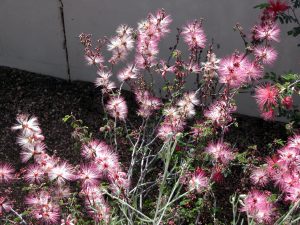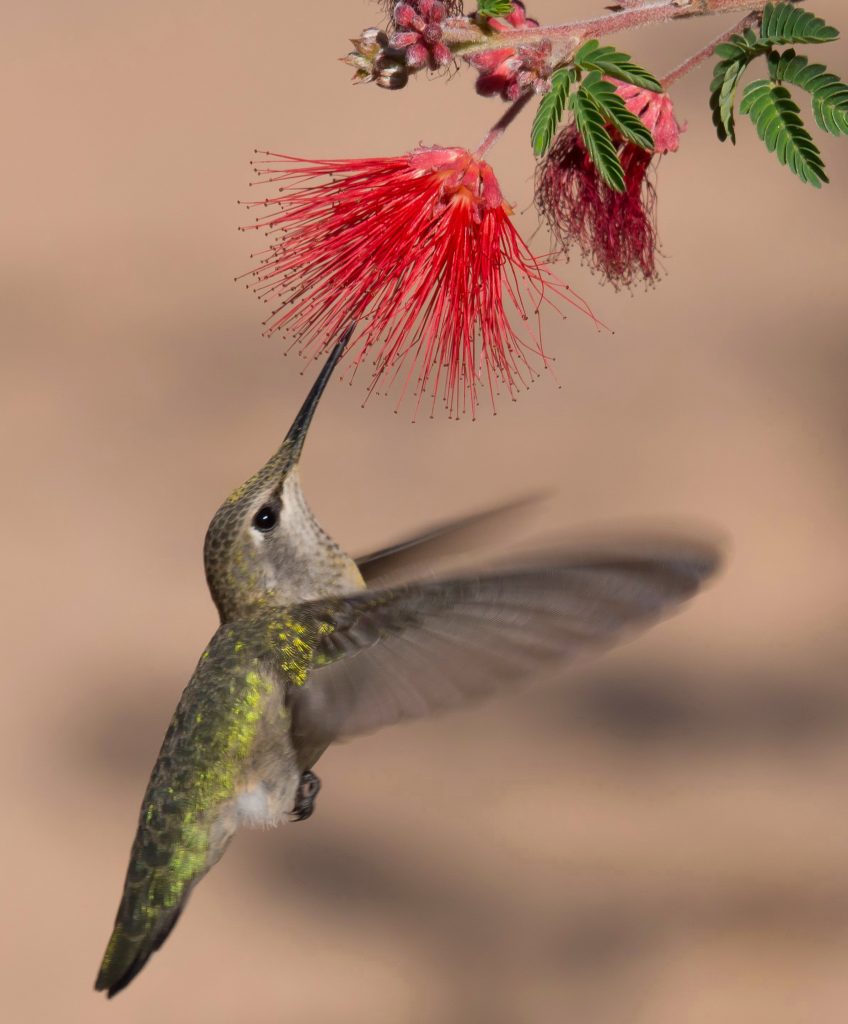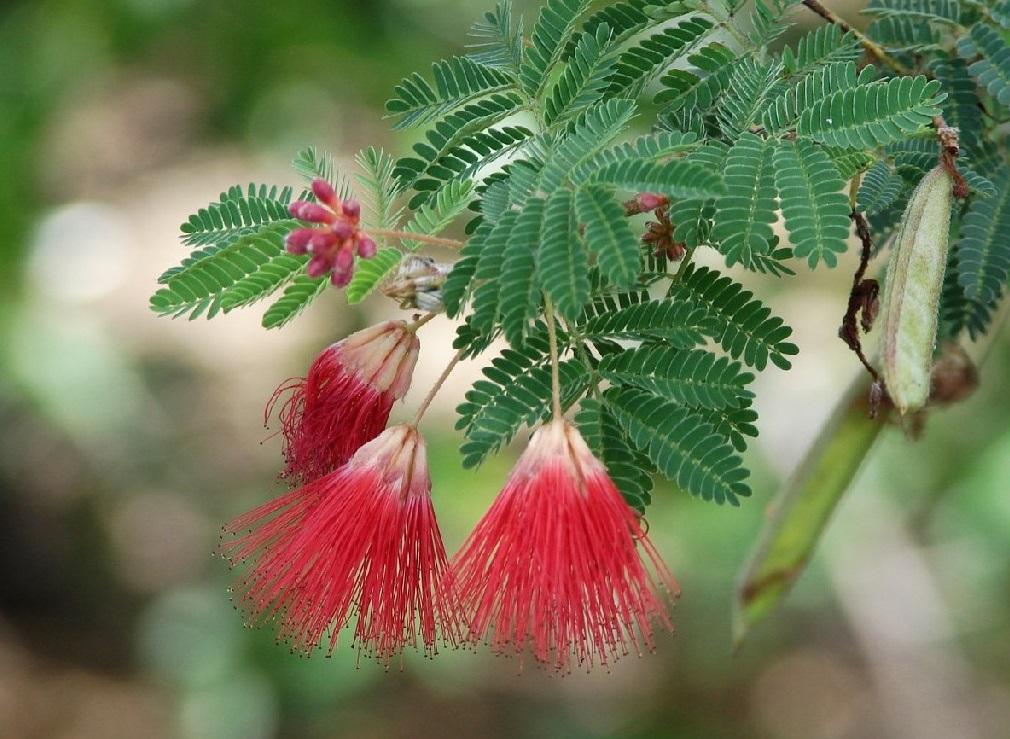Calliandra, commonly known as Fairy Duster, refers to the beautiful stamens which make the tufted or ball-like flowers on these loosely branched shrubs. Their beautiful and vibrant colors range from pale pink to deep red. These small to medium-sized shrubs produce their flowers against a backdrop of finely divided, lacy-looking foliage.
Fairy Dusters can be used in a wide variety of landscape situations. For example, they are a natural for wildlife gardens and add a bright spot of color and a good source of nectar for hummingbirds. They are also well suited to a more traditional yard, where their evergreen foliage and delicate blossoms provide color and interest.
Fairy dusters are low maintenance and require very little pruning to maintain their naturally rounded form. These plants are native to the southwest desert hence, they thrive in desert conditions. They are extremely drought tolerant and bloom lavishly in the full sun. However, they can tolerate most soil types and recover quickly if damaged by frost.
If you want to attract hummingbirds to your garden, the Fairy Duster is a good choice!
Calliandra eriophylla, Pink Fairy Duster/False Mesquite

Pink fairy duster is a small shrub with an explosion of small pink clusters. It is often found on dry and rocky slopes between 1,000 and 5,000 feet in elevation. It matures to about 3 feet tall and 4 feet wide. Masses of fluffy pink flowers cover these plants in the late winter and early spring. These plants occasionally rebloom in the fall!



